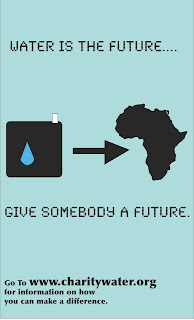Johnson, Louis
Bertus
Design 118
Sustainable Design
Sustainable design has always just made sense to me in terms of what we need to do as a global community to sustain life on this planet. Sustainable design can provide us with more than just a healthy community to live in, it can also reshape the way we think about the world in terms of use, re-use, energy, economics, environment, community, etc. There is more to sustainable design than purely just a green movement, it is a change in thinking and how we think about design. For too many decades we have given little thought to idea of limited supply, limited space, and limited resources. It is this carelessness that has created the need for more ethically responsible thinking about our environment and how are interactions impact it. The backbone of sustainable design is ethical, responsible, and progressive. It requires a completely different shift in thinking than we are accustomed to, but overall tends to implicit the solutions that make sense and appear to be socially responsible. The economics of sustainable design are there but require the notion that sustainability can be profitable by lowering the overall bottom line of traditional projects; public infrastructure for example.
Going back to what I said earlier, “ sustainable design just makes sense.” It seems that we must realize the wealth associated with a cleaner design. And it is a wealth that everybody can share since it belongs to no one but is shared by everyone. This will also train us as individuals to think less selfishly and more on a community level and a global level. Sustainable design can end the destruction of the natural world, and instead inspire the minds of its residents to prolong their own legacy as one of growth and prosperity, that doesn’t require the exploitation of the environment or its people.
Living in Portland, Oregon has always made me proud of the opportunities Portland has taken to be a model for a sustainable city, or a city that is making strives to better serve its residents by encouraging and investing into sustainable design. Metro’s Urban Growth boundary is particularly impressive as a way to encourage smart planning, better land use choices, and vertical growth within our city centers. Portland also has several landmark buildings that are LEED certified. And while LEED certification is not the measuring stick, or the cornerstone in sustainable design, it is notable from a local planners perspective as a step in the right direction. Eco-roofs are an attractive atheistic for urban rooftops but also valuable to diminishing the urban heat island theory. Wastewater recycling is a great initiative by the Water Bureau as well as parks designed with the water cycle in mind. Tanner Springs is a fine example of a park within a dense urban neighborhood that promotes these ideas.
I appreciate everything that designers are doing to promote sustainable futures for us. I respect the change in thinking that is necessary to develop designs that are both beneficial for the community and the environment. It is designs that are progressive and yet just make sense in terms of dealing with limited supply in a closed system. Sustainable design means making smarter choices in the present that will impact our future.
Wednesday, December 10, 2008
Saturday, December 6, 2008
Thursday, December 4, 2008
Charity Water: Finished Product
Wednesday, December 3, 2008
Charity Water Project: Water Bottle Chandeleir
Wednesday, November 19, 2008
Monday, October 27, 2008
Subscribe to:
Comments (Atom)




















